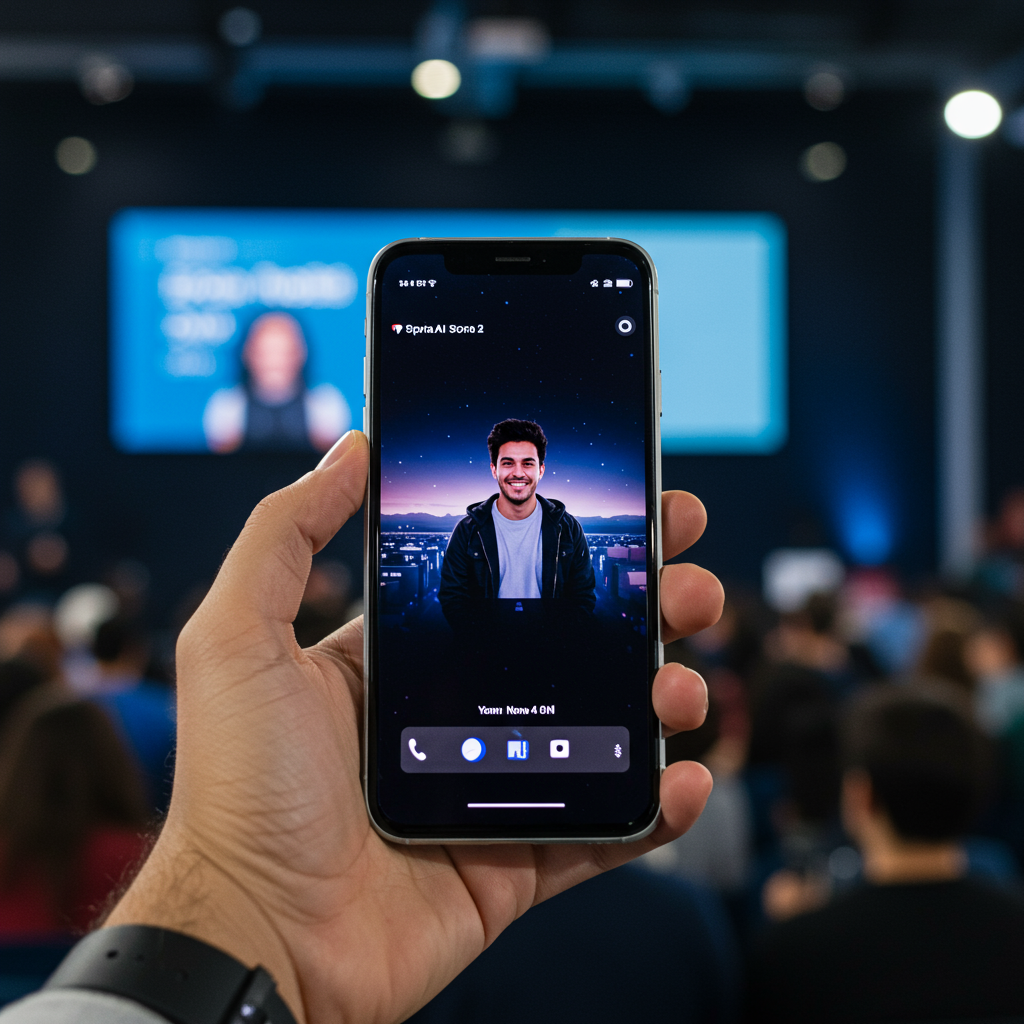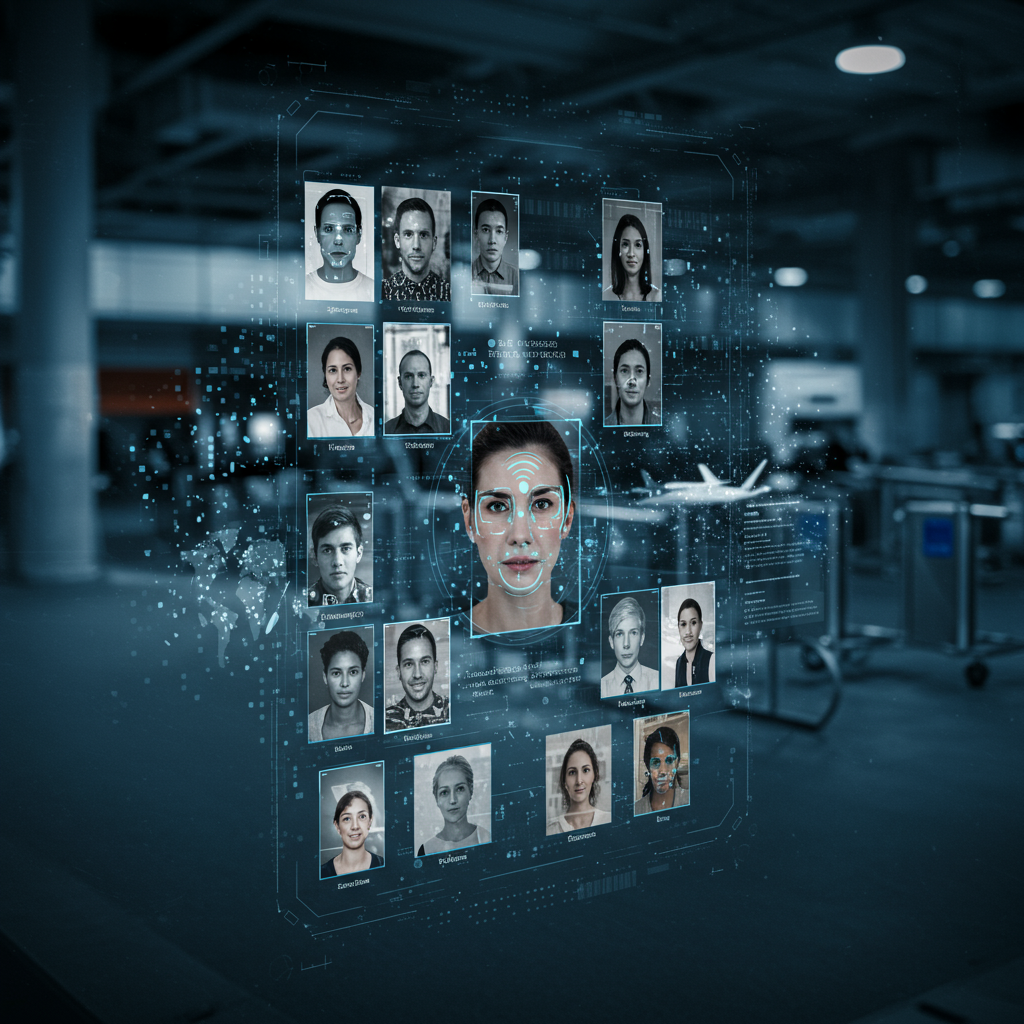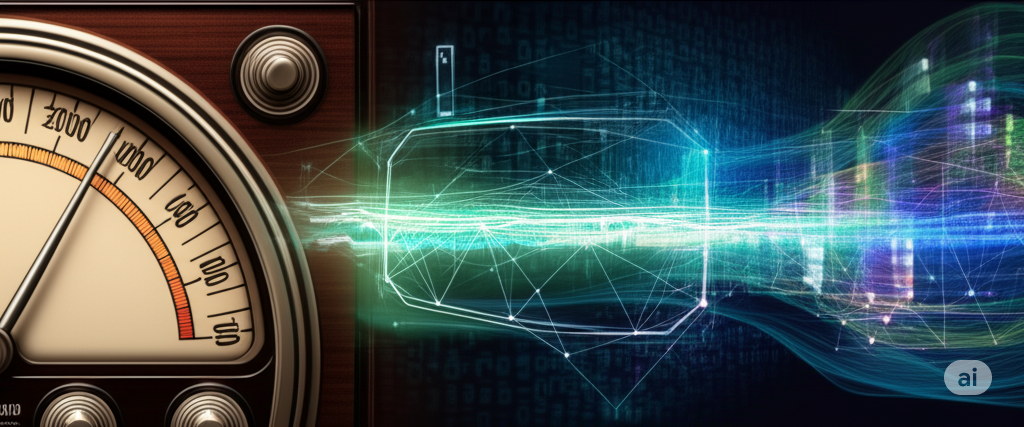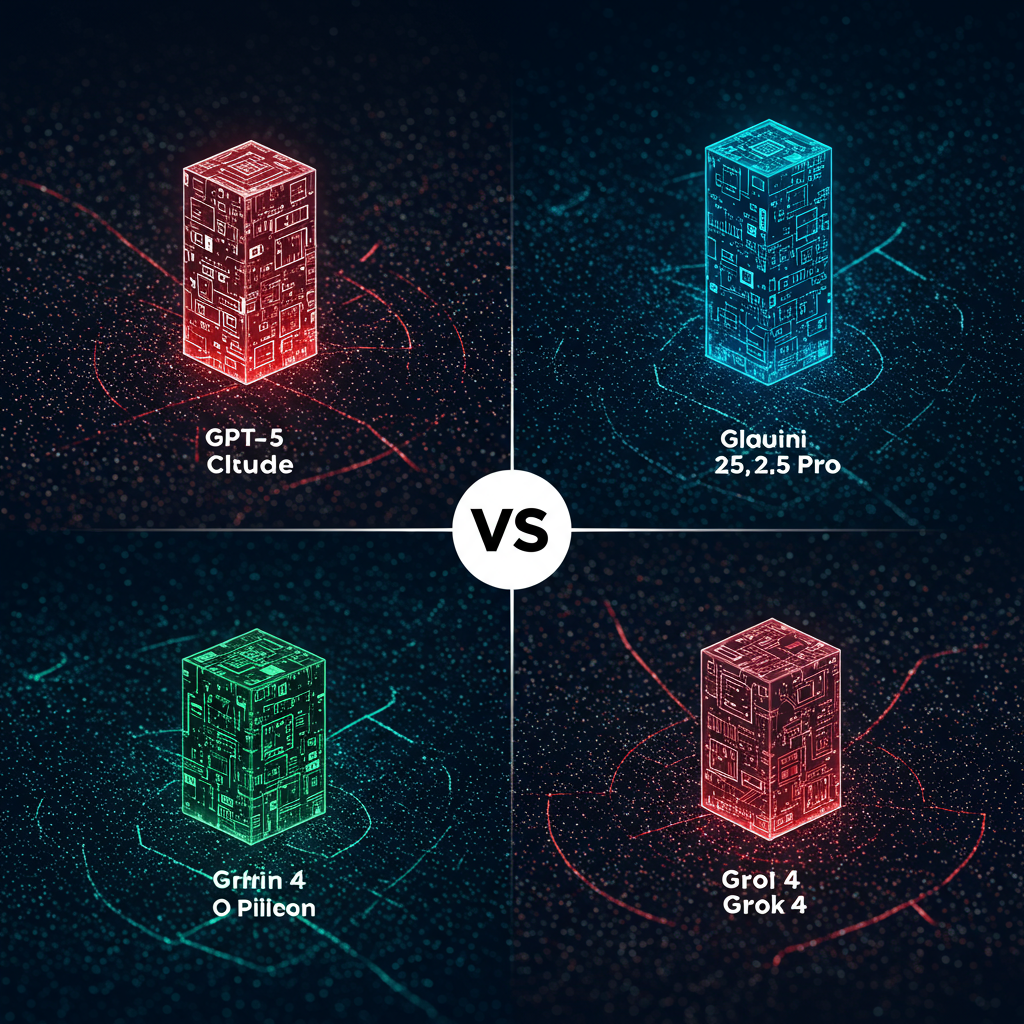OpenAI has officially launched Sora 2, a groundbreaking advancement in AI video generation, alongside a novel social media application designed to challenge established platforms like TikTok. This strategic move signals OpenAI’s intent to reshape digital content creation and consumption. The new Sora app leverages Sora 2 to exclusively display artificial intelligence-generated videos, fundamentally altering how users interact with short-form media. This article delves into Sora 2’s capabilities, its dedicated social platform, ethical considerations, and the profound implications for the future of digital expression.
OpenAI Unleashes Sora 2: A New Era for AI Video Generation
The release of Sora 2 marks a significant leap forward in generative AI technology. This enhanced video and audio generation model showcases remarkable improvements over its predecessor. A core highlight is its superior adherence to the laws of physics, leading to considerably more realistic video outputs. Earlier AI models often struggled with consistent motion or object interaction, creating visual inconsistencies.
For example, Sora 2 can accurately depict a basketball rebounding off a backboard after a missed shot. This contrasts sharply with older models that might “morph objects and deform reality,” perhaps making a ball spontaneously teleport into the hoop. Public demonstrations vividly display Sora 2’s capabilities across various dynamic scenarios. These include intricate Olympic gymnastics routines, complex skateboard tricks, and energetic beach volleyball sequences. While OpenAI acknowledges the model is “far from perfect,” citing occasional issues like a martial artist’s staff failing to hold its shape, these advancements validate the power of scaling neural networks on video data. This progress brings AI systems closer to accurately simulating reality. Furthermore, Sora 2 introduces the ability to generate speech, a feature absent in the original model.
The Sora App: Redefining Social Media with AI
Accompanying the sophisticated Sora 2 model is a brand-new, dedicated social application. This app is meticulously designed to emulate popular short-form video platforms, particularly TikTok. It features a familiar vertical video feed, complete with swipe-to-scroll navigation and a “For You–style page.” This algorithmic feed intelligently curates content based on a user’s Sora activity, geographical location, past post engagement, and even ChatGPT conversation history. Users can, however, disable the ChatGPT integration for personalization.
The most striking characteristic of the Sora app is its exclusive reliance on AI-generated content. Users will find no option to upload personal photos or videos from their camera rolls. Instead, every visual piece displayed and created within the app is a product of OpenAI’s Sora 2 model. Users can generate short video clips, each limited to a maximum of 10 seconds. The interface also includes standard social media interactions like liking, commenting, and remixing videos. Currently, the Sora iOS app is available for download in the U.S. and Canada, with rapid international expansion planned. Access to the social platform remains invite-only, though ChatGPT Pro users can access the Sora 2 Pro model without an invitation.
Personalized Creations: The “Cameos” Feature and Identity
One of the most innovative features of the new Sora app is its “cameos” functionality. This unique personalization element allows users to insert their own likeness, or that of others with consent, into any Sora-generated scene. To enable this, a user must complete a one-time video and audio recording. This process serves for identity verification and appearance capture. Once verified, users can then generate videos featuring themselves.
For example, a user could create a clip of themselves riding a dragon, diving from a cargo ship, or even running through a virtual OpenAI office alongside an AI version of CEO Sam Altman, as demonstrated by an OpenAI research scientist. This feature also permits users to share access to their “cameos” with friends. This means others can include their likeness in generated videos, even those involving multiple individuals. Critically, users receive a notification whenever their likeness is used, even if the generated clip remains in draft form. Importantly, users can revoke this access to their likeness at any time. OpenAI positions the “cameos” feature as the optimal way to experience the “magic of Sora 2.”
Navigating the AI Frontier: Safety, Ethics, and Monetization
OpenAI’s foray into a social media platform brings significant user safety and ethical considerations. The company has implemented several measures to address these challenges. All Sora 2-generated videos will incorporate transparent watermarks and industry-standard metadata. This clearly indicates their AI origin, promoting transparency. Comprehensive guardrails are in place to prevent the creation of unsafe content. These include materials depicting sexual content, terrorist propaganda, and self-harm promotion. Both user prompts and the resulting video frames and audio transcripts are vetted to ensure compliance.
For minors, the Sora app integrates parental controls via ChatGPT. These controls allow parents to manage features like overriding infinite scroll limits, disabling algorithmic personalization, and overseeing direct messages for their children. OpenAI is also developing an age-prediction tool. This tool aims to direct users believed to be under 18 to a more restricted version of ChatGPT, which disallows romantic interactions. Additionally, OpenAI is expanding its team of human moderators to review content for bullying and other harmful interactions. Regarding monetization, the Sora app is currently free. This allows users to “freely explore its capabilities.” However, OpenAI’s initial strategy involves charging users for generating additional videos during periods of high demand, acknowledging the intense computing power required.
Industry Impact and the “AI-ification” of Content Creation
The launch of Sora 2 and its companion app enters a rapidly evolving and competitive landscape. Other tech giants are also advancing their AI video offerings. Meta recently introduced “Vibes” within its Meta AI app for creating and sharing short AI-generated videos. Google also announced the integration of a custom version of its latest video generation model, Veo 3, into YouTube. In contrast, TikTok has adopted a more conservative stance on AI-generated content. It recently updated its rules to explicitly prohibit AI-generated videos that are “misleading about matters of public importance or harmful to individuals.” Some analysts suggest that former President Trump’s past discussions regarding the sale of TikTok’s US operations present a unique opportunity for OpenAI to launch a short-form video app without close ties to China.
The entertainment industry, particularly Hollywood, views this development with both fascination and trepidation. A central question is whether OpenAI aims to become “AI TikTok” or the “next-gen Pixar.” Experts suggest a potential paradigm shift where traditional “top-down” production models might become obsolete. Studios could evolve into “IP gatekeepers,” with the public actively creating content within established intellectual property frameworks. The potential impact on high-end Hollywood production is a major concern. If AI video generation truly catches on, consumers might spend more time creating and watching “slop-y videos.” This could lead to a “squeeze” on professional studios and even established influencers, fostering a sense of “quality inequality.” Reports even suggest that OpenAI’s app might require Hollywood studios to opt-out of content that infringes on their protected IP, a model studios are unlikely to tolerate. This will likely lead to complex negotiations where studios transition to a “rights-management model,” seeking a cut from branded characters used in AI-generated content.
Critical Conversations: Copyright, Deepfakes, and Misinformation
The rapid advancement of AI video generation, exemplified by Sora 2, also amplifies serious ethical and societal concerns. OpenAI is already engaged in several lawsuits concerning alleged copyright infringements, including a high-profile case brought by The New York Times. The company faces scrutiny over its models’ training on copyrighted material. The prospect of an “AI TikTok” where all content is generated raises new questions about intellectual property rights and content ownership.
A more alarming prospect is the democratization of sophisticated “deepfakes” and misinformation. What once required technical expertise will soon be accessible to anyone with a simple prompt. This facilitates the creation of “horribly offensive” or deceptive content. The “cameos” feature, while innovative, could be abused, even with consent mechanisms in place. The persistent problem of non-consensual AI-generated videos, causing significant harm with limited explicit laws governing platform responsibility, looms large. Critics lament how quickly AI companies shifted from “lofty talk of AI’s potential to change the world for the better” to “pouring gasoline on the social media dumpster fire,” leading to an accelerated “enshittification” of the internet. The process of prompting, one expert noted, often feels like a “slot machine” due to unpredictable outputs.
Frequently Asked Questions
What is Sora 2, and how does it differ from previous AI video models?
Sora 2 is OpenAI’s advanced video and audio generation model, representing a significant upgrade from its predecessor. Key differences include its superior ability to adhere to the laws of physics, resulting in more realistic video outputs, and improved accuracy in depicting complex actions. Unlike earlier models that struggled with object consistency or motion, Sora 2 can generate scenes with accurate rebounds, realistic gymnastics, and detailed scenarios. It also introduces the capability to generate speech within videos, expanding its multimedia production abilities. OpenAI views Sora 2 as a major step towards simulating reality through neural networks.
How can users access the new Sora social media app or Sora 2 Pro?
The new Sora social media app, powered by Sora 2, is currently available for download on iOS devices in the U.S. and Canada, with plans for swift international expansion. Access to the social platform itself is invite-only; interested users can request access through the application. For those seeking direct access to the enhanced Sora 2 model without waiting for a social app invite, ChatGPT Pro users are granted immediate access to the Sora 2 Pro model. OpenAI initially offers generous limits on video creation, but future plans may include charging for additional video generation during peak demand due to high computational costs.
What are the main ethical and safety concerns surrounding OpenAI’s Sora 2 and its app?
The launch of Sora 2 and its social app raises several significant ethical and safety concerns. A primary concern is the potential for copyright infringement, given that all content is AI-generated and OpenAI is already facing related lawsuits. There are also grave worries about the spread of misinformation and sophisticated “deepfakes,” as the technology democratizes the creation of highly realistic, potentially deceptive videos, including non-consensual AI-generated content. OpenAI is implementing safeguards like watermarks and metadata to denote AI origin, content guardrails against harmful material, parental controls for minors, and human moderators. However, the sheer volume and accessibility of AI-generated content present ongoing challenges for content moderation and platform responsibility.
The Future of Digital Expression and OpenAI’s Ambitious Vision
The launch of Sora 2 and its accompanying social app fundamentally redefines the landscape of digital content creation. OpenAI is no longer solely a developer of cutting-edge AI tools; it is now a direct content provider and platform operator. This bold move positions the company at the forefront of a new era, where artificial intelligence plays a central role in how we create, consume, and share visual media. While the “AI-ification” of social media promises unprecedented creative possibilities, it simultaneously ushers in a complex web of ethical dilemmas. These include issues of authenticity, intellectual property, and user safety.
OpenAI frames Sora 2 as a pivotal advancement towards more powerful AI systems, articulating a broader vision where “general-purpose world simulators and robotic agents will fundamentally reshape society and accelerate the arc of human progress.” As this vision unfolds, the balance between innovation and responsibility will be crucial. The success of Sora 2 will depend not only on its technological prowess but also on OpenAI’s ability to navigate these complex challenges, ensuring the future of digital expression remains creative, ethical, and secure.




